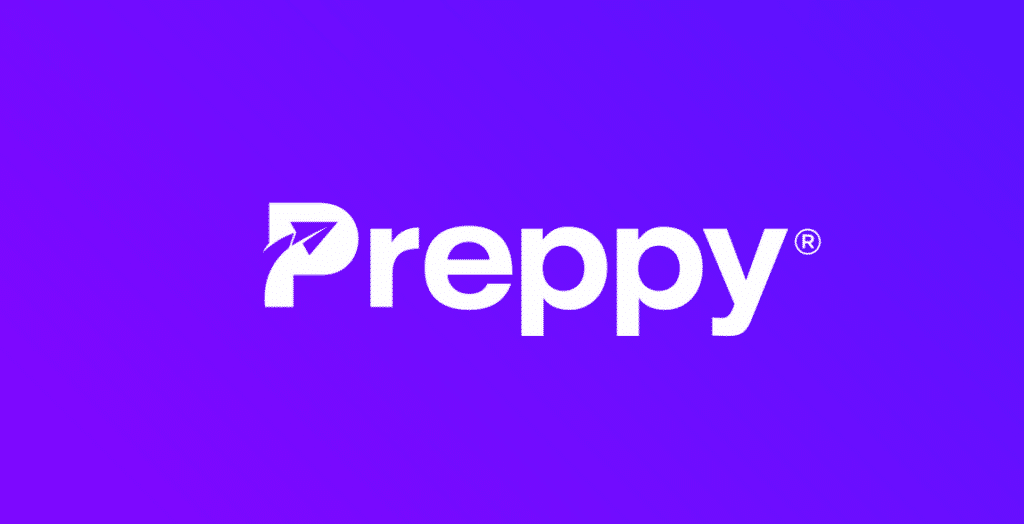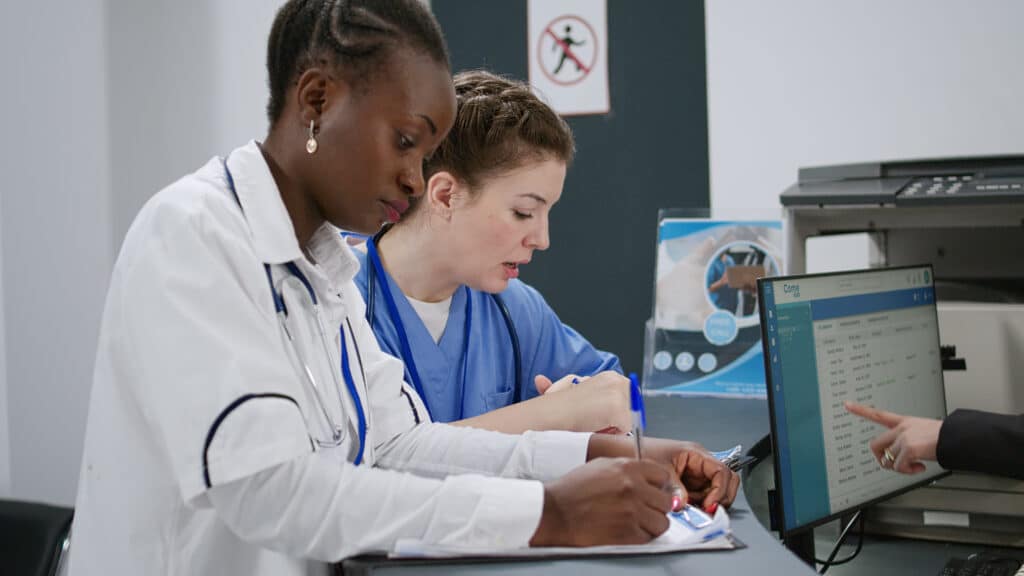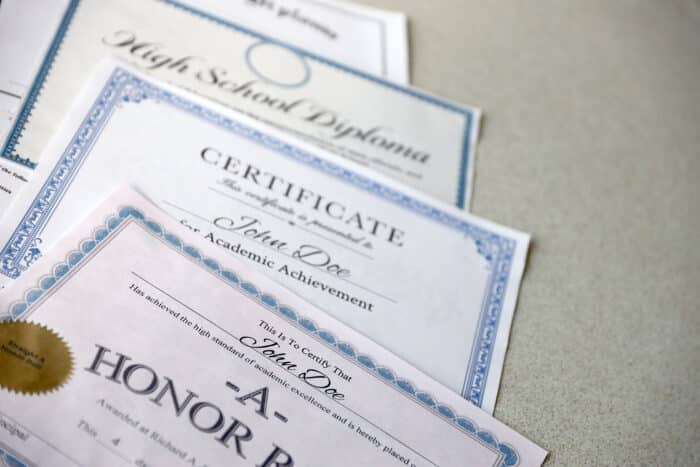Are you looking for a career where you can be your own boss and really make a difference?
Are you also a healthcare enthusiast, and want to enter this rewarding career but have second thoughts about the amount of money and years you would need to spend on schooling?
If you’re nodding along, and you love the idea of working with different people, then you might want to check out medical billing and coding as a career.
And guess what? You don’t need to spend forever or empty your pockets to get started.
Picture yourself as the behind-the-scenes hero, keeping patient records in check and making sure those healthcare bills are spot-on.
In a world where accuracy is key, skilled medical billers and coders are the most demanded heroes of the healthcare world, keeping things running smoothly.
If you’re eager to jump into this exciting field, you might also be wondering how to stand out.
Here’s the scoop: Getting certified is your ticket to success. It shows employers you’re serious and ready to get down to business.
But here’s the thing: Not all certification programs are equal.
That’s where we come in. We’ve done the legwork to find the best schools and courses for aspiring medical billers and coders.
So, are you ready to kickstart your career? Let’s do this!
1
Preppy
Top Pick

Key Highlights
- Thorough Curriculum
- University Certificate
- Online Classes
- Externship Opportunities
- Lowest Tuition Fee
- Beginner Friendly
Preppy, an online education platform in collaboration with Auburn University, is a nonprofit institution, offering an accessible pathway into the world of medical billing and coding, even for beginners.
This program provides the flexibility to learn at your own pace, fitting into your busy schedule rather than rigid class schedules.
Through Preppy’s 100% online and self-paced course, students have the option to manage their work or other life commitments along with completing their medical billing and coding programs.
With a faster completion time of under 6 months and the most affordable tuition fees compared to other options, Preppy stands out as the top choice for aspiring medical billers and coders.
Additionally, Preppy offers several advantages over competing programs, including:
– Lowest tuition costs, with the option for monthly installments
– FREE laptops for full payment upfront
– One year of free access to QuickBooks software for practical training
– Post-course externship opportunities for real-world experience and resume enhancement
Click Here to Know More About Preppy’s Online Medical Billing and Coding Program!
2
American Academy of Professional Coders (AAPC)

Key Highlights
- Thorough Curriculum
- University Certificate
- Online Classes
- Externship Opportunities
- Lowest Tuition Fee
- Beginner Friendly
AAPC offers online courses that are built for beginners in medical billing and coding. Founded in 1928, it’s a top organization in the field.
Their popular programs include the Certified Professional Coder (CPC) and Certified Professional Biller (CPB) courses. You can customize your learning with extras like practice exams and code books.
Here’s what you’ll learn in their programs:
– Master three medical code sets: ICD-10-CM, CPT, and HCPCS Level II
– Understand healthcare plans and reimbursement methods
– Handle physician-based insurance claims and navigate regulations
The AAPC program offers two options for students so that they can choose their style of learning according to their comfort.
If you opt for self-paced learning, you can complete the program in 4 to 8 months, and if you want an instructor-led program, you may be able to finish it in 16 weeks.
Some pros of the AAPC program include a 30% higher pass rate than other programs and job assistance once you finish your course.
But there are also a few cons that we noticed. For one, you won’t be able to get your hands on a University Certificate, which is an important credential to hold as a Medical Biller and Coder.
Additionally, even though the tuition fee is one of the best in the market, it is not the lowest. There is also an additional $349 for the certification exam.
3
American Health Information Management Association (AHIMA)

Key Highlights
- Thorough Curriculum
- University Certificate
- Online Classes
- Externship Opportunities
- Lowest Tuition Fee
- Beginner Friendly
AHIMA is another respected organization that helps students prepare for certification exams. Their courses are flexible and cover everything from medical records management to coding guidelines.
In their Medical Coding and Reimbursement program, you’ll learn about different code sets, coding ethics, and documentation skills.
Their program is self-paced and can be completed in a year.
Now, let’s talk about the pros and cons of enrolling in this program.
Some of the pros of AHIMA include:
– AHIMA credential is highly regarded
– Offers self-paced learning
And the cons:
– Tuition costs, which is also one of the best in the market but not the lowest, with an additional $299 fee for certification exams.
– Lengthy program duration.
– No externship opportunities or job assistance.
4
Penn Foster Career School

Key Highlights
- Thorough Curriculum
- University Certificate
- Online Classes
- Externship Opportunities
- Lowest Tuition Fee
- Beginner Friendly
Penn Foster’s School offers an Online Medical Billing and Coding Career Diploma Program that prepares you for certification exams from top organizations like the NHA, AAPC, and AHIMA.
This program allows students to study at their own pace, which means they need to dedicate a few hours to coursework.
In this program, you’ll learn to apply coding guidelines, interpret medical information, understand reimbursement processes, and develop computer skills.
Penn Foster’s program can be completed in around 15 months and is self-paced.
Pros of this program include:
– Program includes certification exam costs
– Self-paced learning
Cons:
– Limited professional guidance
– Lengthy program duration
– Tuition is not the lowest in the market.
– No job assistance.
5
MedCerts Medical Coding and Billing Program

Key Highlights
- Thorough Curriculum
- University Certificate
- Online Classes
- Externship Opportunities
- Lowest Tuition Fee
- Beginner Friendly
MedCerts’ Medical Coding and Billing Professional program is another known program.
This 28-week online program covers foundational, intermediate, and professional-level topics, including Human Anatomy, Medical Terminology, Insurance Billing and Coding Essentials, and Medical Coding.
MedCerts offers dual certification with either CPC-A (Certified Professional Coder) or CCS-P (Certified Coding Specialist) enhancing job prospects in outpatient settings.
Pros of this program:
– Program covers certification costs
– Self-paced learning
Cons:
– Program duration is lengthy
– Tuition fees apply
– No job placement assistance provided.
Medical billers and coders are an essential part of the healthcare system because they ensure accurate billing for healthcare services, helping healthcare providers receive proper payment and patients get billed correctly.
They also manage revenue flow, ensure compliance with regulations, and indirectly support quality patient care by maintaining the financial health of healthcare facilities.
What Do You Typically Learn in a Medical Billing and Coding School?
So, when you imagine stepping into a medical billing and coding school—it’s like diving into a world where you’ll soak up everything about healthcare administration, the medical lingo, and coding know-how.
You’ll be learning new terms, understanding the ins and outs of healthcare systems, and mastering the art of turning medical records into strings of numbers that make the billing world.
In a medical billing and coding school, students typically learn a range of topics related to healthcare administration, medical terminology, and coding procedures.
Here’s a breakdown of what you might expect to learn:
1. Medical Terminology: Understanding medical terminology is essential for accurately coding procedures and diagnoses. Students learn about anatomy, physiology, and common medical terms.
2. Healthcare Systems and Regulations: Students learn about the structure of healthcare systems, including insurance programs like Medicare and Medicaid. They also learn about healthcare laws and regulations, such as HIPAA (Health Insurance Portability and Accountability Act).
3. Medical Coding Systems: This involves learning different coding systems such as ICD-10-CM (International Classification of Diseases, 10th Edition, Clinical Modification) for diagnoses and CPT (Current Procedural Terminology) for procedures. Students learn how to accurately assign these codes based on medical records.
4. Insurance Claims Processing: Understanding how to process insurance claims is a critical aspect of medical billing and coding. Students learn about insurance claim forms, submission procedures, and how to handle denials and appeals.
5. Electronic Health Records (EHR) Systems: Many healthcare facilities use electronic health records for documenting patient information. Students may learn how to navigate and use EHR systems effectively.
6. Medical Billing Procedures: This includes learning how to generate and submit patient bills, understand insurance coverage and reimbursement policies, and handle billing inquiries.
7. Medical Ethics and Professionalism: Students learn about ethical standards and professionalism in healthcare, including patient confidentiality, ethical coding practices, and professional communication.
8. Medical Office Administration: Students may also receive training in general office procedures, scheduling appointments, managing medical records, and other administrative tasks commonly performed in medical offices.
But, now you might be curious:
How Do I Choose the Right Certification Course for Medical Billing and Coding?
When it comes to diving into the world of medical billing and coding, selecting the right school or course can make all the difference in your journey.
Here’s what you should ideally look for in an ideal medical billing and coding program:
1. Online Classes:
Opting for a program that offers online classes provides flexibility, allowing you to study from the comfort of your own home. This not only saves you the hassle of commuting but also offers the convenience of learning at your own pace, fitting your studies around your existing commitments.
2. Comprehensive Curriculum:
A good curriculum is essential for acquiring the knowledge and skills needed to excel in medical billing and coding. Look for courses that cover a wide range of topics, from basic principles to advanced techniques, ensuring you receive a well-rounded education.
3. Self-Paced Learning:
We all have our unique learning styles and schedules. Choosing a program that offers self-paced learning allows you to tailor your studies to suit your individual needs. Whether you prefer to dive into the material head-on or take a more easy approach, self-paced courses offer the flexibility to learn at your own speed.
4. All-Inclusive Tuition:
Hidden costs can quickly add up and derail your budget. To avoid any surprises down the line, opt for courses with all-inclusive tuition fees that cover everything you’ll need, including textbooks and other educational materials. This ensures you can focus on your studies without worrying about additional expenses.
5. Externship Opportunities:
While theoretical knowledge is essential, gaining hands-on experience can truly set you apart in the competitive job market. Look for courses that offer externship opportunities, providing you with real-world experience and valuable practical skills that will enhance your employability.
Related Articles:
Related Articles
-
How to Be Successful in College in 2022 – 7 Simple Tips to Succeed
-
How Do Scholarships Work? Read This First…Truth is Shocking
-
7 Best College Majors 2024: What Should I Major In?
-
How to Choose a College – 10 Things You Must Consider in 2024
-
Why Go to College? Top 13 Benefits for Adult Students in 2022
-
Top 5 Best Alternatives to Community College for 2024








